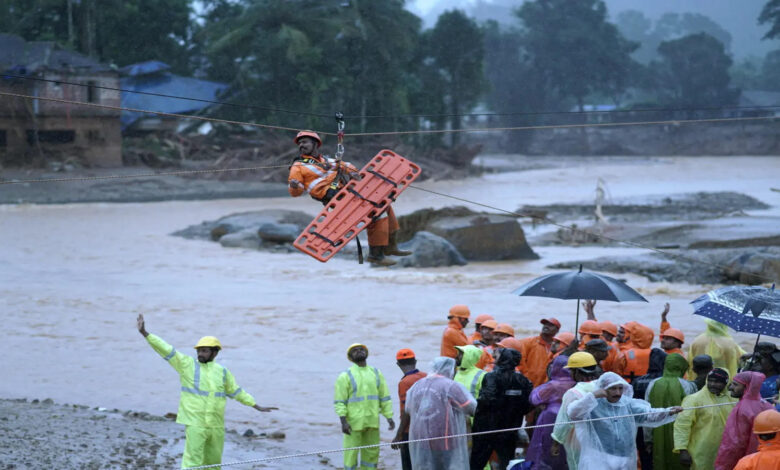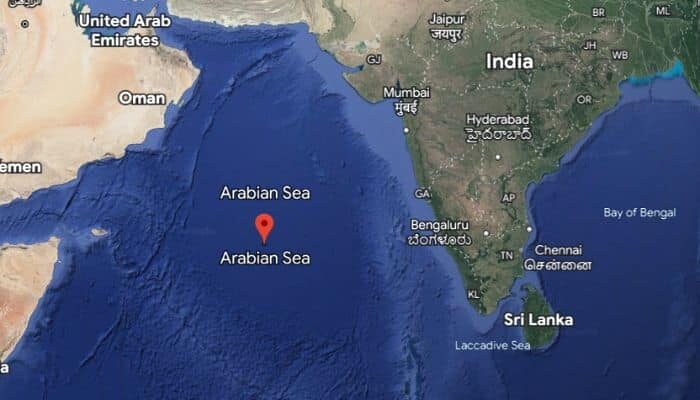Climate Scientists links warning of Arabian Sea to Wayanad landslides
A series of landslides struck the hilly area of Wayanad following extreme rainfall across the state.

Heavy rainfall in Kerala has triggered multiple landslides in the Wayanad district, resulting in the deaths of 45 people. On Tuesday, a senior climate scientist linked it to the warning of Arabian Sea, enabling the formation of deep cloud systems. These systems are causing intense downpours in Kerala over a short period, increasing the risk of landslides.
Earlier on Tuesday, a series of landslides struck the hilly area of Wayanad following extreme rainfall across the state. The landslides have resulted in multiple casualties and created a sense of fear among the locals, who feel trapped in the debris.
“The soil was saturated after two weeks of rainfall. A deep mesoscale cloud system formed off the coast in the Arabian Sea on Monday and led to excessive rain in Wayanad, Calicut, Malappuram, and Kannur, resulting in localised landslides”, S. Abhilash, the director of the Advanced Centre for Atmospheric Radar Research at Cochin University of Science and Technology (CUSAT) told PTI.
He further referred the situation to the 2019 Kerala floods. “The clouds were very deep, similar to those seen during the 2019 Kerala floods,” he said.

He mentioned that scientists have observed a trend of very deep cloud systems forming over the southeast Arabian Sea. He added that occasionally, these systems move inland, as was the case in 2019.
“Our research found that the southeast Arabian Sea is becoming warmer, causing the atmosphere above this region, including Kerala, to become thermodynamically unstable,” Abhilash said.
“This atmospheric instability, allowing the formation of deep clouds, is linked to climate change. Earlier, this kind of rainfall was more common in the northern Konkan belt, north of Mangalore. With climate change, that rain-bearing belt with deep clouds is extending southward and this is the main reason behind such extremely heavy rainfall”, he said.
According to research published in npj Climate and Atmospheric Science journal in 2022 by Abhilash and some other scientists, rainfall is becoming more intense over the west coast of India.
Historical Comparisons to 2019 Kerala Floods
A 2021 study by Abhilas and researchers from IITM and IMD, published in Elsevier, revealed that a key area of intense rainfall in the Konkan region (between 14 and 16 degrees north) appears to have moved southward, potentially leading to severe consequences.
The study states, “An increase in rainfall intensity may suggest a rising probability of landslides in the high to mid-land slopes of the Western Ghats in eastern Kerala during the monsoon seasons.”
The India Meteorological Department listed several automatic weather stations in Thrissur, Palakkad, Kozhikode, Wayanad, Kannur, Malappuram, and Ernakulam districts, which recorded rainfall between 19 cm and 35 cm.
Abhilash further affirmed that “Most automatic weather stations of the IMD in the region recorded rainfall above 24 cm in 24 hours. Some stations installed by farmers recorded more than 30 cm of rain.”
The Met Office has forecasted heavy rainfall in some areas of Kerala in the next couple of days. This can worsen the situation in the southern state.
You might also be interested in – Rescue in Kerala landslide: 42 dead, center provides cash assistance for relatives of victims



